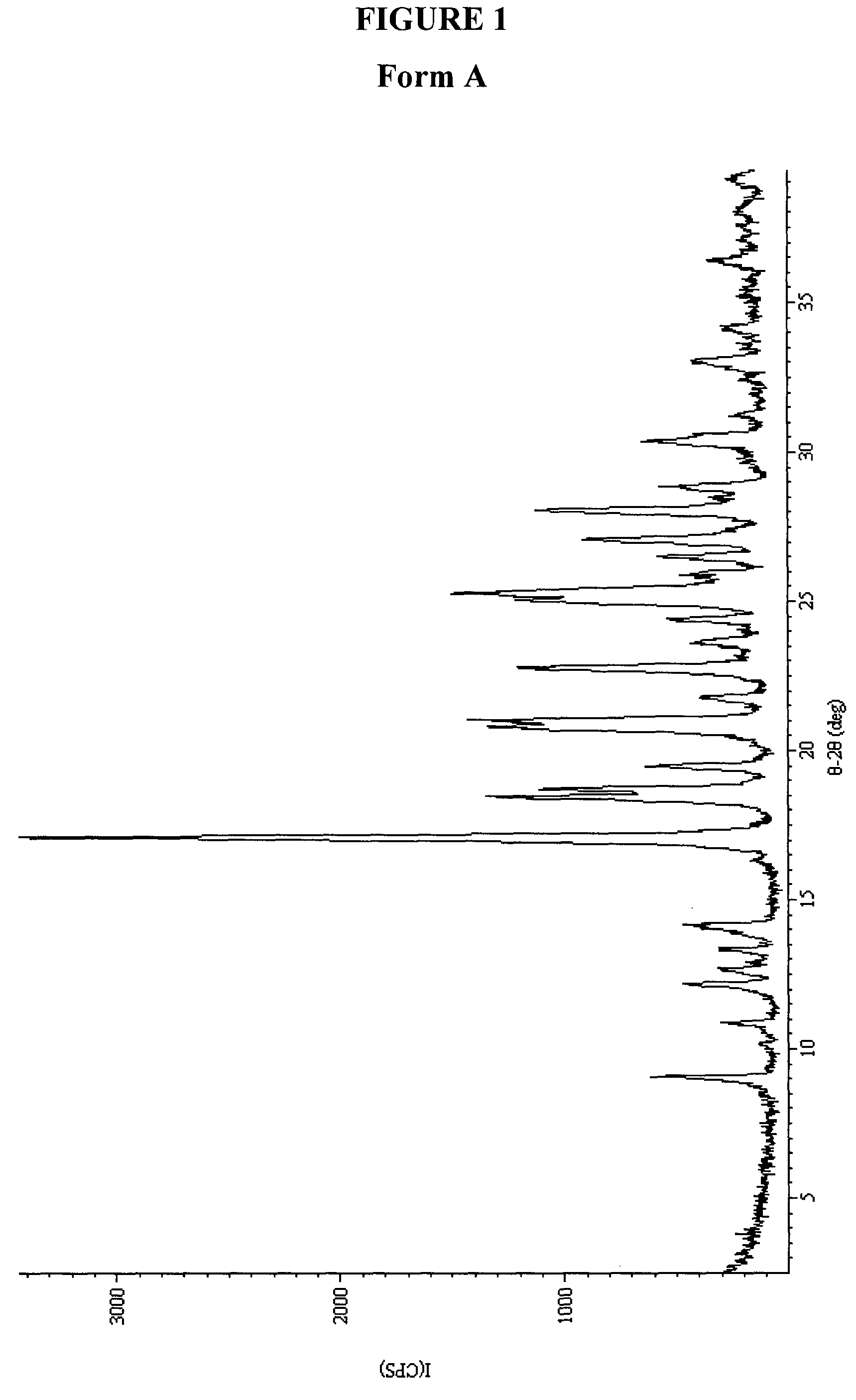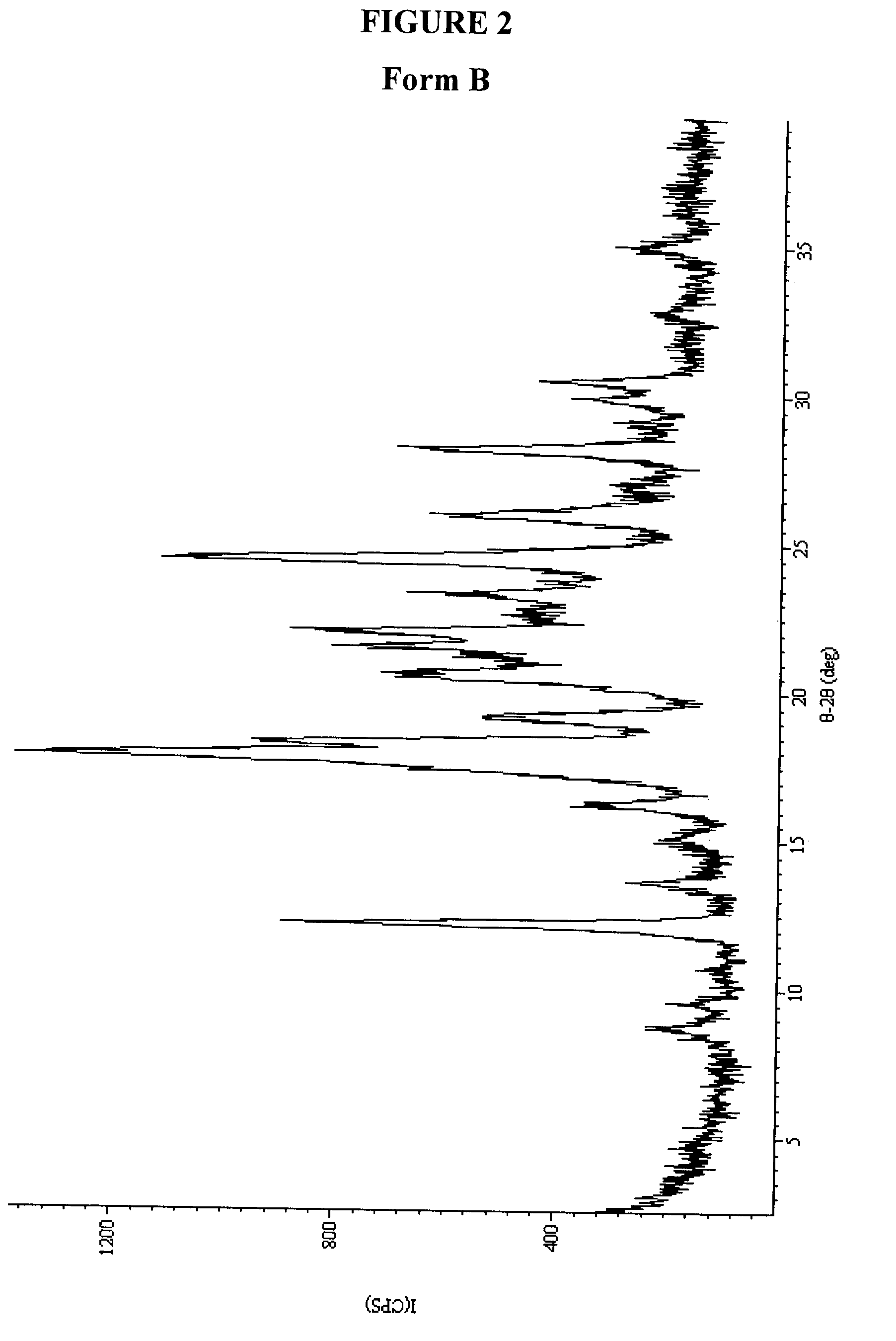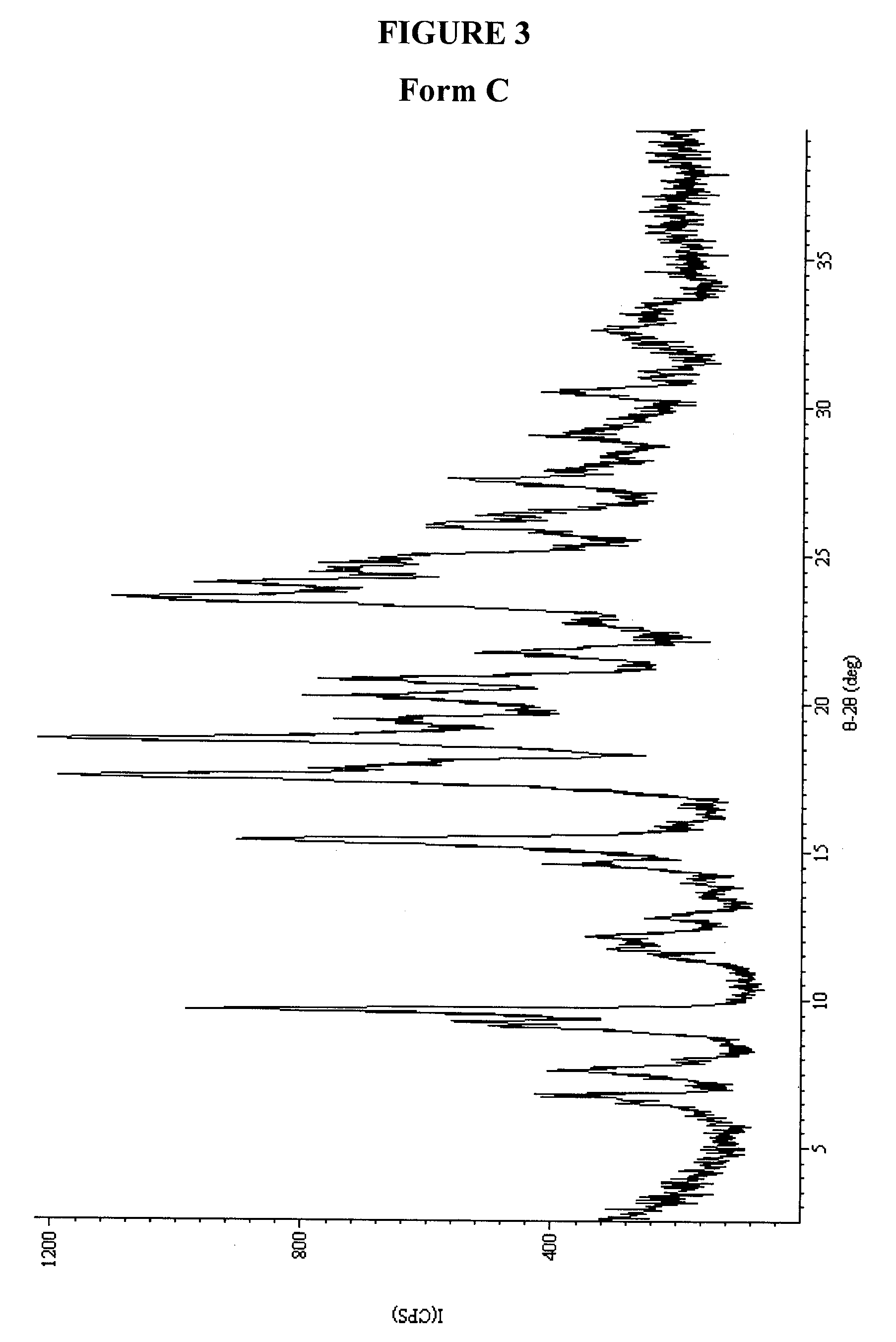Solid forms of a Raf kinase inhibitor
a kinase inhibitor and solid form technology, applied in the field of solid form of raf kinase inhibitor, can solve the problems of complex multigenic disease with poor prognosis, and the expectation of tumor growth and angiogenesis, and inhibiting the pdgfr kinase activity with small molecules
- Summary
- Abstract
- Description
- Claims
- Application Information
AI Technical Summary
Problems solved by technology
Method used
Image
Examples
example 1
Preparation of Form A
Method 1
[0214]1-Methyl-5-(2-(5-(trifluoromethyl)-1H-imidazol-2-yl)pyridin-4-yloxy)-N-(4-(trifluoromethyl)phenyl)-1H-benzo[d]imidazol-2-amine (753 mg) was suspended in 17 mL of a mixture of 46% acetic acid and 54% water. The resulting mixture was cooled from 85 to 24° C. over 24 h, then kept at 4° C. for 24 h. The solids were filtered, washed with water, and air-dried for at least 2 days. The crystalline product was analyzed by XRPD, DSC, and TGA (See FIGS. 1, 17, and 33).
Method 2
[0215]1-Methyl-5-(2-(5-(trifluoromethyl)-1H-imidazol-2-yl)pyridin-4-yloxy)-N-(4-(trifluoromethyl)phenyl)-1H-benzo[d]imidazol-2-amine (649 mg) was dissolved in 10 mL of acetonitrile. The resulting mixture was cooled from 85 to 24° C. over 24 h, then kept at 4° C. for 24 h. The solids were filtered and air-dried for 2 days. The crystalline product was analyzed by XRPD, DSC, and TGA and found to be consistent with Form A.
Method 3
[0216]1-Methyl-5-(2-(5-(trifluoromethyl)-1H-imidazol-2-yl)pyri...
example 2
Preparation of Form B
Method 1
[0218]1-Methyl-5-(2-(5-(trifluoromethyl)-1H-imidazol-2-yl)pyridin-4-yloxy)-N-(4-(trifluoromethyl)phenyl)-1H-benzo[d]imidazol-2-amine (1 g) was dissolved in 10 mL of ethyl acetate by heating. The resulting mixture was cooled from 65 to 4° C. over 24 h, then kept at 4° C. for 24 h. The solids were filtered, washed with water, and air-dried for at least 2 days. The crystalline product was analyzed by XRPD, DSC, and TGA (See FIGS. 2, 18, and 34).
Method 2
[0219]1-Methyl-5-(2-(5-(trifluoromethyl)-1H-imidazol-2-yl)pyridin-4-yloxy)-N-(4-(trifluoromethyl)phenyl)-1H-benzo[d]imidazol-2-amine (652 mg) was dissolved in 4.5 mL of acetone. The resulting mixture was cooled from 65 to 4° C., then kept at 4° C. for 24 h. The solids were filtered, washed with water, and air-dried for 2 days. The crystalline product was analyzed by XRPD, DSC, and TGA and was found to be consistent with Form B.
Method 3
[0220]1-Methyl-5-(2-(5-(trifluoromethyl)-1H-imidazol-2-yl)pyridin-4-yloxy)-...
example 3
Preparation of Form C
[0223]1-Methyl-5-(2-(5-(trifluoromethyl)-1H-imidazol-2-yl)pyridin-4-yloxy)-N-(4-(trifluoromethyl)phenyl)-1H-benzo[d]imidazol-2-amine (177 mg) was dissolved in 18 mL of hexane. The resulting mixture was cooled from 65 to 4° C., then kept at 4° C. for 24 h. The solids were filtered, washed with water, and air-dried for 2 days. The crystalline product was analyzed by XRPD, DSC, and TGA (See FIGS. 3, 19, and 35).
PUM
| Property | Measurement | Unit |
|---|---|---|
| 2θ | aaaaa | aaaaa |
| 2θ | aaaaa | aaaaa |
| 2θ | aaaaa | aaaaa |
Abstract
Description
Claims
Application Information
 Login to View More
Login to View More - R&D
- Intellectual Property
- Life Sciences
- Materials
- Tech Scout
- Unparalleled Data Quality
- Higher Quality Content
- 60% Fewer Hallucinations
Browse by: Latest US Patents, China's latest patents, Technical Efficacy Thesaurus, Application Domain, Technology Topic, Popular Technical Reports.
© 2025 PatSnap. All rights reserved.Legal|Privacy policy|Modern Slavery Act Transparency Statement|Sitemap|About US| Contact US: help@patsnap.com



